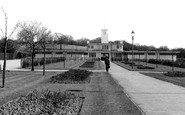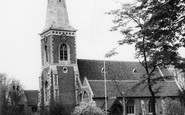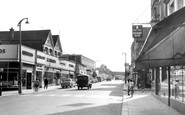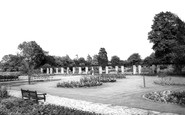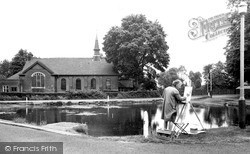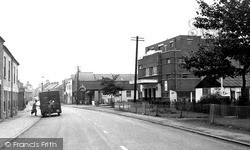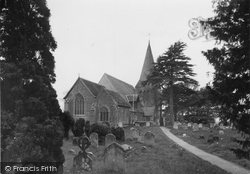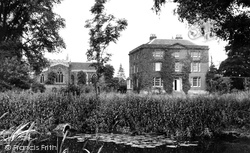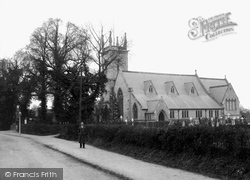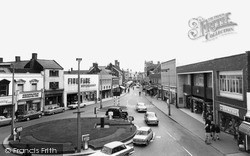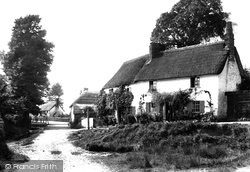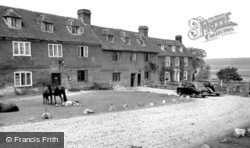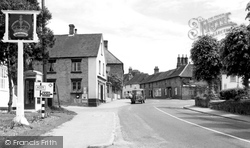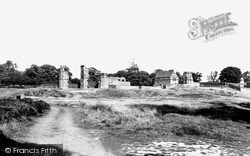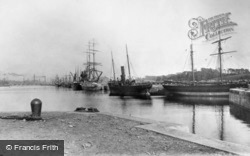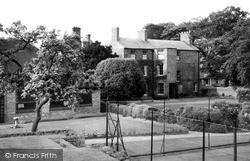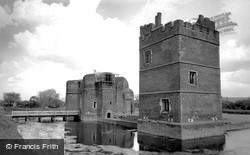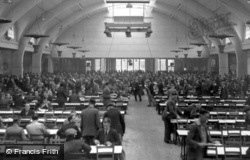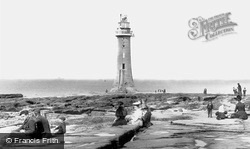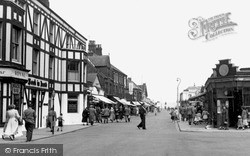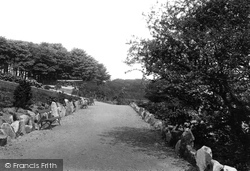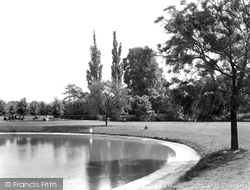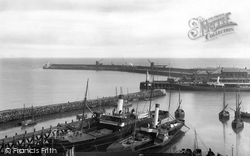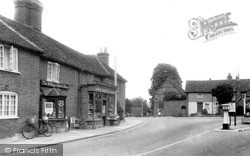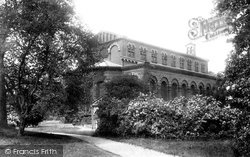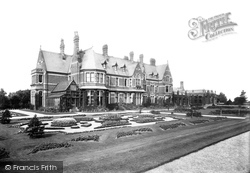Places
2 places found.
Those places high-lighted have photos. All locations may have maps, books and memories.
Photos
5 photos found. Showing results 301 to 5.
Maps
29 maps found.
Books
Sorry, no books were found that related to your search.
Memories
668 memories found. Showing results 151 to 160.
Samples Yard
I used to live a few doors from auld Jimmy Sample and his wife Carrie, his son John was married to June and they lived in Francis Terrace. They had their rag and bone yard down the Winnin, anyway I would spend summer nights, weekends ...Read more
A memory of Newburn in 1955 by
School Uniform And Schooldays
This was 1958 the time when I seriously got into drainpipes, drapes and rock 'n roll music. I was at Walbottle Secondary Modern School. I used to take in the leg width of my jeans by hand using a needle and thread to ...Read more
A memory of Newburn in 1958 by
Growing Up At Newton Poppleford
I was born in London, moved to Oak Tree Villas at Newton Poppleford in Devon at 9 months. Jean Bastin lived on one side and Brian Pring on the other, with Mrs Harrison the church organist in the fourth ...Read more
A memory of Newton Poppleford in 1930 by
Larkswood Swimming Pool
I remember using the Larkswood swimming pool in all weathers, even having to break the ice. I also remember the horrible changing rooms and sitting for hours on the hills - sometimes never bothering to swim. You ...Read more
A memory of South Harefield in 1960 by
Growing Up In Wallington
I lived in Bute Gardens West, from Oct 1943 to when I married in 1965. My friends were Donald Scott, Rex Poge, Yashew, an immigrant boy who we nearly killed with a bow and arrow, and brother Dave. We had a club, The ...Read more
A memory of Wallington in 1953 by
Sutton The Park And Pinnacle
Sutton as I remember it holds many memories. I was born and brought up there, attending school at the Council School, Sunday School at the Chapel and using the facilities of the Park from an early age until I ...Read more
A memory of Sutton-in-Craven by
The Nursery
I was born in 4 The Nursery in 1944. My gran Elizabeth Bayles, my mother Emma Bayles. I went to Millbank School at age 4yrs. I can remember my first teacher there Miss Watkins. My Mother worked at Lockeys buses as a bus ...Read more
A memory of West Auckland in 1953 by
The Boys Dining Hall Hutton
Hi, I was in the Hutton Residential School from 1930 to 1939. Mr Higden was the Headmaster. We had a big dining hall where all the boys had their meals - it was more like a scene from the film, Oliver, [food ...Read more
A memory of Shenfield in 1930 by
High Street At Redhill
As a 16 year old, I was a boarder from Cartagena de Indias, Colombia at Saint Joseph's Convent, 122 Ladbroke Road. With me there were around 25 girls ranging from the ages of 4 to 17 years old and at least from 10 different ...Read more
A memory of Redhill in 1966 by
Broadway
I used to live in 'The Nine Gables' pink painted house in Woolwich Road opposite the Graham Road Secondary Modern School for boys and was the only boy caned for hitting the headmaster with a snowball full in his face ! My house was not ...Read more
A memory of Bexleyheath in 1950 by
Captions
388 captions found. Showing results 361 to 384.
This view across the pond towards the rather miserable brick church is standard artist's stuff, but the buildings, including Mill Hill School, some of 1825, Belmont of 1773, by James Paine junior, the
Syston, a Domesday village situated about four miles north of Leicester, was industrialised by an influx of framework knitters in the 19th century, which generated standardised red brick buildings
Much of the church is rendered, with the chancel and east chapel in 15th-century Flemish brick, probably built at the same time as the castle itself.
The red brick rectory dates from about 1810.
Even today it is still possible to see the large sign built into the bricks of the houses that made up this hospital: it reads 'Barrow Hospital supported by voluntary contributions'.
The fabric used in the building is grey vitrified brick in the 76-feet-high north-west tower and the main body of the church, which was consecrated on 14 May 1844, although the aisles and chancel
The traffic islands and the roads were being replaced by a brick surface. It all had to be finished before the Tulip Parade in early May. The shops are still there, but all have changed owners.
Below the heathlands is the absolutely delightful church of St John in the Wilderness, a haven of peace and tranquillity for all who seek a break from the excitements of the bustling resort of Exmouth
Originally these 18th-century red brick cottages were for estate workers. The fifth cottage down from the start of the terrace, No 84, is a chapel, and No 74 is now the village shop.
There are grey and red brick buildings here. The cottages straight ahead were built in the 1860s. On the left is the Crown Inn, where a gruesome event took place in 1944.
Started around 1490 by Thomas Grey. 1st Marquis of Dorset, and built using bricks produced on the site, the house was the county's first true country house.
'Helen Craig' steamed on until 1959, when she was sold for breaking up. She was given a civic send-off from Preston as she sailed out for the last time.
The photograph shows the rear of the red brick master's house of c1725, which was originally of two stories until a third was added around 1835, backed by a neat garden and tennis courts.
carefully set out within a rectangular moat, and the beauty of the remains, which are in the guardianship of English Heritage, resides not so much in the architecture but in the glowing colour of the brick
They operated four staggered shifts, with half an hour for lunch and tea and two ten-minute tea breaks. Inevitably labour relations all around became strained.
This was a period when thousands of hard-working Liverpudlians took their families on a much-needed break.
The brick façade on the right has also been demolished, and the snack bar is now the Mablethorpe Rock Co.
The Town Clerk, Mr Aitken, had provided swans and waterfowl to stock the lake which had been created, and the Accrington Brick and Tile Company had donated several terra-cotta vases which had been placeed
This froze solid in January, and was soon covered with bricks and old tin cans.
'Chatham' was sold for breaking up in September 1906. 'Roubaix' was sold to the LB&SCR in 1904 and renamed 'Trouville'. She was broken up in 1911.
good roads and order, is admirably managed at both places; but I very much doubt if 'old salts' would recognise the Portsmouth of Charles Dickens and Captain Marryat…in the new, smart, red-bricked
The Village Sweet Shop and Hailey's have gone, and this very pretty building, which hides a 17th-century timber frame behind its brick skin, is now a restaurant, to which has been added a not very beautiful
This amazing independent brick building is staggering by its sheer size, scale and style.
Waterhouse favoured the use of contrasting red brick and terracotta; as well as using it at Hutton Hall, he used it on his other two buildings in Guisborough, the Grammar School and Overbeck, a private
Places (2)
Photos (5)
Memories (668)
Books (0)
Maps (29)

